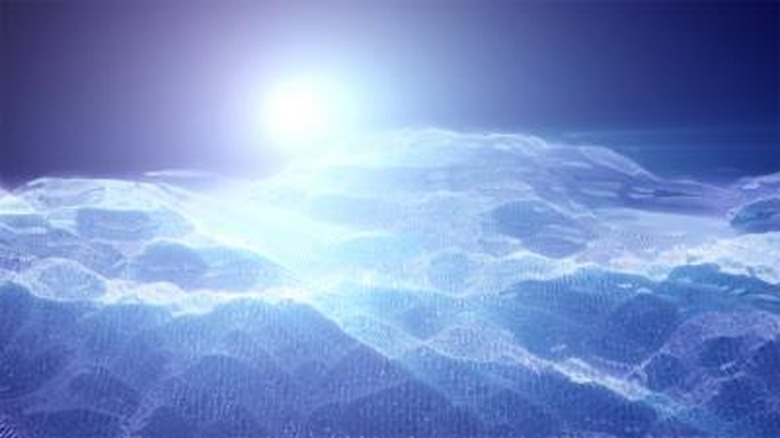Which Planets Have Polar Ice Caps?
Of all the planets in the solar system, only the four inner ones, along with Pluto (which was demoted to dwarf planet status in 2006) are solid. Of these, only Earth, Mars and Pluto have permanent polar ice caps. However, all the planets exhibit anomalies at their poles. Some of the larger moons of Jupiter and Saturn also have polar features that may not be ice caps, but are just as interesting.
Mars
Mars
In February 2003, scientists at the California Institute of Technology announced that the Martian polar ice caps, previously thought to be composed of carbon dioxide, were mainly water ice. After analyzing data from the Mars Global Surveyor and Mars Odyssey, Andy Ingersoll and Shane Byrne concluded that both caps have a thin layer of carbon dioxide that evaporates every year to expose the core of frozen water underneath. The carbon dioxide layer is thicker on the south pole, and unlike the cap at the north pole, does not entirely disappear during the Martian summer.
Pluto
Pluto
Pluto is over three billion miles from the sun, and it's smaller than many of the moons in the solar system. Information about Pluto is scarce — even the Hubble Space Telescope has trouble seeing it. It has a surface layer of methane, nitrogen and carbon monoxide that freezes when the planet is far from the sun and forms a thin atmosphere when it is closer. Imaging has revealed lighter and darker spots on the planet's surface that correspond to variations in temperature and the presence of polar ice caps. Planetary scientist Guillaume Robuchon has suggested that there may be an ocean underneath them.
Earth
Earth
Earth's poles are hostile and forbidding places. They have the coldest temperatures on the planet and ice sheets that are more than two miles thick in some places. The sheets cover a saltwater sea on the north pole and a landmass with an area approaching five million square miles on the south pole. Most of Earth's ice, which accounts for only three percent of the water on the planet, exists at the poles, with the largest ice sheets being in Greenland and Antarctica. Both are changing rapidly, which could be a result of global warming.
Jovian Moons
Jovian Moons
Jupiter's four largest moons (called the Galilean satellites) are almost planets in their own right, and three of them, Io, Europa and Ganymede, have a layered structure similar to Earth's. Both Europa and Ganymede have a layer of water ice on the surface, and in the case of Europa, the water covering it is deep enough to form a planetary ocean. Because the surface layer is frozen over, Europa has an ice cap that covers its entire surface, not just its poles. Scientists estimate that there is more water on Europa than there is on Earth.
Saturnian Moons
Saturnian Moons
Saturn has 53 moons, more than any other planet. The largest, Titan, is the second-largest moon in the solar system and has an atmosphere similar to what many scientists believe existed on Earth eons ago. It is thick enough to prevent a detailed study of the moon's surface, but scientists suspect there may be hydrocarbon lakes on the poles. Enceladus, another moon of Saturn, doesn't have a polar ice cap, but it does display geyser-like activity at its south pole that spews ice particles into space. There are large ice boulders on the ground and evidence of an internal heat source.
Cite This Article
MLA
Deziel, Chris. "Which Planets Have Polar Ice Caps?" sciencing.com, https://www.sciencing.com/planets-polar-ice-caps-8568246/. 24 April 2017.
APA
Deziel, Chris. (2017, April 24). Which Planets Have Polar Ice Caps?. sciencing.com. Retrieved from https://www.sciencing.com/planets-polar-ice-caps-8568246/
Chicago
Deziel, Chris. Which Planets Have Polar Ice Caps? last modified March 24, 2022. https://www.sciencing.com/planets-polar-ice-caps-8568246/
